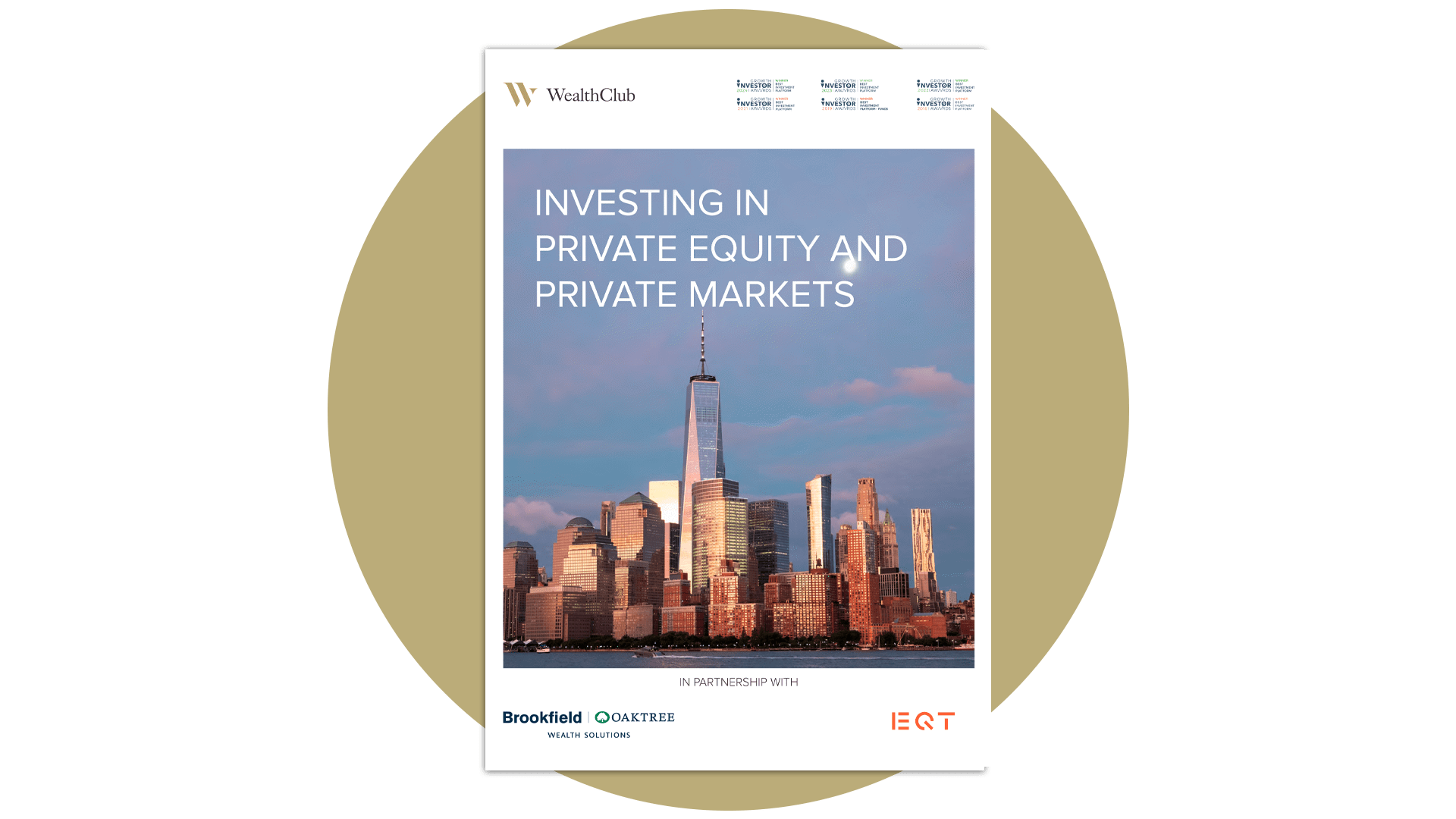Important: The information on this website is for experienced investors. It is not a personal recommendation to invest. If you’re unsure, please seek advice. Investments are for the long term. They are high risk and illiquid and can fall as well as rise in value: you could lose all the money you invest.
What’s the appeal of Private Equity?
Private Equity’s total market size has grown nearly tenfold since the turn of the century.
Its appeal as an investment can be explained by three main factors.
- Exposure to unique, high-growth companies – by going ‘off-exchange’ investors can tap a larger set of companies, with many unique and exciting growth stories.
- Portfolio diversification – since this huge pool of equity doesn’t move in lockstep with global stock indices, it could be an effective portfolio diversifier.
- Enhanced return potential – returns on Private Equity have consistently outperformed their public counterparts over the past 30 years – past performance isn't a guide to the future.
Performance of Private Equity vs. Global Listed Equities
Key Private Equity facts
Read all or skip to the information you're after
How to access Private Equity?
There are three main ways an investor can get exposure to Private Equity.
- Private Equity funds
- Direct or co-investments
- Funds of funds
Private Equity funds are run by expert Private Equity firms. Traditional ‘drawdown’ funds raise capital from external investors, and then close. These funds usually require large investment minimums (up to £5-10 million), and capital is usually committed for at least 7-10 years.
Recently, new fund structures have emerged, allowing easier access for private investors. Semi-Liquid Funds are an important innovation in this regard. They have far lower investment minimums (from £10,000), and accept new capital and allow redemptions on a rolling basis – typically once a month or quarter (although a long-time horizon is still encouraged).
Direct investments are made straight into the equity of a private company, without first being collected by a fund. These investments can be made in isolation, or alongside an experienced Private Equity fund (co-investment).
Fund of funds offer investors access to a wider range of investments – often across both Private Equity and other Private Markets. By spreading their capital across multiple different funds, they can provide greater diversification.
What about investment trusts?
It is possible to get exposure to Private Equity via investment trusts, which invest in private equity but themselves trade on public exchanges.
This could be a consideration if you wish to have exposure to Private Equity within your existing ISA or SIPP portfolios or if liquidity is a high priority.
However, investment trusts have some limitations. Since each trust’s shares are publicly traded, they are subject to significant short-term market volatility and shifts in investor sentiment.
Furthermore, investment trusts often trade at a large discount to net asset value (NAV). Discounts can also be highly volatile. In the five years to June 2024, discounts have averaged 27% and reached as high as 37%. Should you wish to redeem your stake in a Private Equity-focused investment trust, you may be able to do this quickly but may also be forced to sell at a loss. Any widening of the discount will also erode long-term performance.
Who might consider investing in Private Equity funds?
Historically only institutional and highly sophisticated investors were eligible to invest in Private Equity, although this is changing.
Pension funds, endowments, ultra-high net worth individuals and other accredited investors already allocate as much as 25-40% of their capital to this asset class. These entities are deemed to have the expertise to understand opaque investment structures, as well as the capacity to withstand substantial losses.
More recently, we’ve seen a ‘democratisation’ of Private Equity and other Private Markets. New and more flexible fund structures have extended their appeal to private investors and a broader swathe of investment managers.
You might consider investing if you are an experienced investor who’s looking to access a much wider universe of companies and growth stories than available via mainstream listed markets and for the potential to enhance returns. Private Equity investments could also help diversify your portfolio and somewhat mitigate the impact of stock market fluctuations.
However, these investments are illiquid and should still be seen as a long-term commitment: you can't easily or quickly realise your investment, they can take many years to generate any returns and you could lose the capital you invest.
This is one of the reasons why these funds are subject to restrictions on promotion. Through Wealth Club, for instance, you can see a directory of private equity funds available, but to access more details you'll need to qualify as a High Net Worth or Sophisticated investor first.
What are the different Private Equity fund strategies?
Broadly speaking, there are three main Private Equity fund strategies:
- Buyout
- Venture capital
- Growth capital
Buyouts involve the purchase of a large or majority stake in a private company, potentially alongside the current management team (Management Buyout) and often involving the issue of substantial amount of debt (Leveraged Buyout).
Venture capital refers to investments in early-stage businesses that are typically looking to develop and launch new products and services.
Growth capital describes equity investments into already-established companies seeking to expand their operations.
How are performance and investor returns calculated?
Semi-Liquid Private Equity funds publish estimated NAV valuations once a quarter, in some cases once a month. Since the underlying companies they invest in are not listed on stock exchanges, they do not have daily market values.
Fund performance can be calculated by looking at the change in valuation between two time periods.
How much can I invest in Private Equity funds?
Traditional Private Equity required a high initial investment, often in the range of £5-10 million. This limited the pool of potential investors to large institutions and ultra-wealthy individuals.
But with the advent of new fund structures such as Semi-Liquid Funds, investment minimums have been lowered substantially. For instance, through Wealth Club, it’s possible for experienced investors to participate in Private Equity funds for as little as £10,000.
What are Private Equity fund charges?
Most Private Equity funds charge their clients two main types of fees.
Management fees accrue as a percentage of assets under management (AUM). These are usually in the region of 2% per annum and cover the fund’s operating costs.
Performance fees are typically charged as a percentage of realised profits. These are normally around 20% and reward the fund for the success of its investments. A ‘hurdle rate’ is often applied to performance fees. This is a minimum return that must be achieved before the fund can take a share of realised profits.
Note: there will also typically be an initial charge, as well as fees applied by the service through which you invest. You should check the charges carefully before you invest.
How to redeem a Private Equity fund stake?
Traditional ‘closed-ended’ or 'drawdown' Private Equity funds are highly illiquid. They open their doors to investor capital and close them again once the target raise is reached. They typically deploy investor's capital over a 3-4 year investment period and distribute proceeds once those investments have been sold. This means investors can be locked in for a decade or more (read more on Drawdown funds and the differences with Semi-Liquid funds).
Newer ‘open-ended’ fund structures such as Semi-Liquid funds have addressed this illiquidity issue – although a long-term investment horizon is still encouraged. They allow requests for capital redemptions to be submitted on a quarterly, or even monthly basis. In return for this privilege, investors can pay slightly more in fees.
Note that settlement is not immediate. it can take a month or more for the NAV to be confirmed and settlement made. Moreover, many Semi-Liquid Funds place a hard cap on total redemptions in any one period. Accordingly, it is not guaranteed an individual investor will be able to liquidate their holding within a given redemption ‘window’. Please see each fund review for details.
When redeeming units in a fund, investors are paid based on the prevailing Net Asset Value of the fund.
Read more on the differences between Drawdown and Semi-Liquid funds »
What is the tax treatment of Private Equity investments?
When you invest in a Private Equity fund, there are no tax reliefs.
For UK taxpayers, any income generated by the fund (whether distributed or not) will be subject to income tax. Any realised gains from the fund should be subject to capital gains tax. The fund will typically publish the amount of income earned some time after the end of its annual reporting period. This should then be reported on your self-assessment return.
Remember, tax rules can change and tax benefits depend on your circumstances.
What happens to my Private Equity investment when I die?
When you die, your Private Equity investments will normally form part of your estate and so are potentially subject to inheritance tax. Any fund holdings should be able to be transferred into your elected beneficiaries’ names.
What are the main risks of Private Equity?
While all investments can lose money, Private Equity sits at the riskier end of the investment spectrum. Some of the main risks are listed below.
Capital risk – As with any investment, you could get back less than you invest. You should not invest capital that you could need in the medium to long term, or which you cannot afford to lose.
Market risk – Investments in Private Equity are sensitive to changes in the global economic outlook. An economic slowdown or a drop in investor confidence could have an impact on the value of Private Equity investments.
Liquidity risk – Private Equity investments are long term and not easily realisable, with no established or easy-to-access secondary market. If you were to exit early, you may have to sell at a discount.
Currency risk – Investments in companies or instruments which are denominated in currencies other than the fund’s base currency expose it to the risk of large exchange rate movements.
Valuation risk – It may be difficult to find appropriate pricing references and readily available information in respect of unlisted investments. Certain investments are valued based on estimated prices and therefore subject to potentially greater pricing uncertainties than listed securities. The complexity of the investment structure may add to this.
Due to the inherent risks of Private Equity, it would be prudent for an experienced investor to allocate a relatively small percentage of their total portfolio to this asset class.
See share price five-year discrete performance
| 2022-2023 | 2021-2022 | 2020-2021 | 2019-2020 | 2018-2019 | |
|---|---|---|---|---|---|
| Restaurant Brands International Inc | 18.28% | 24.99% | 2.05% | -4.76% | 20.97% |
Source: Morningstar, 31/12/2018 to 31/12/2023, with dividends reinvested, in GBP. Past performance is not a guide to the future.


